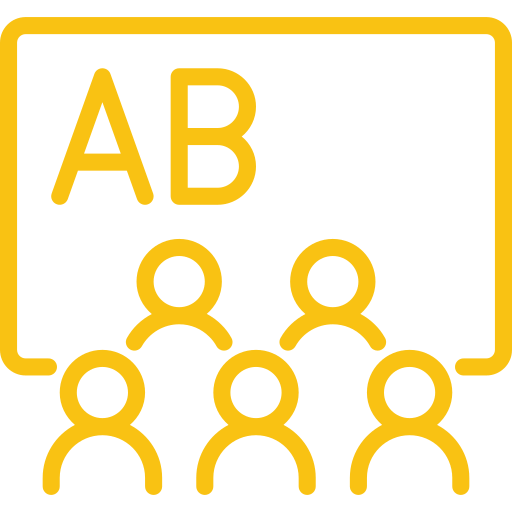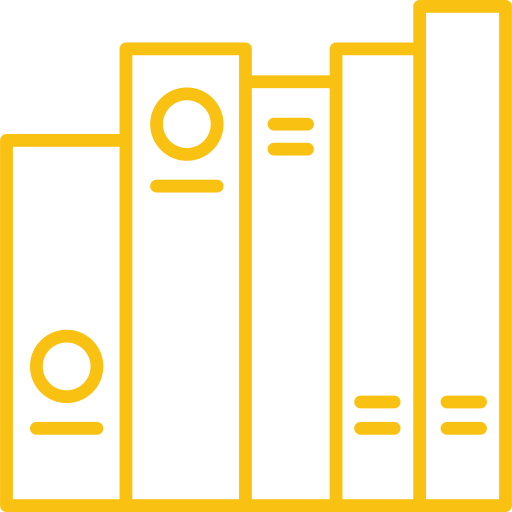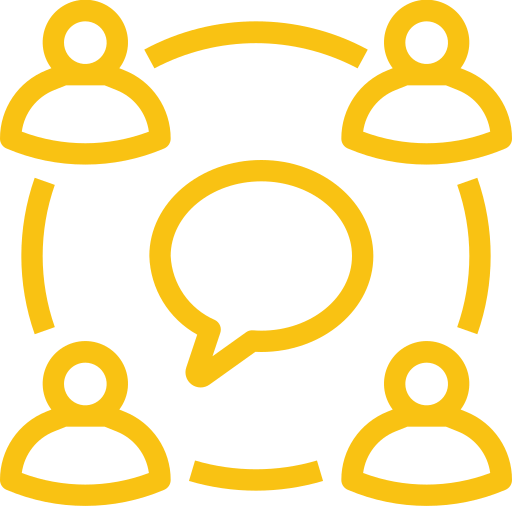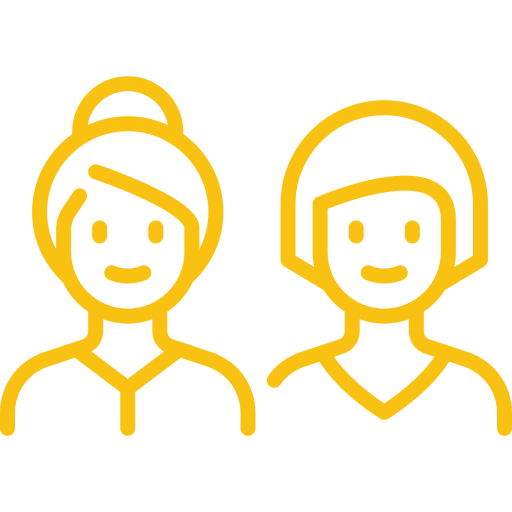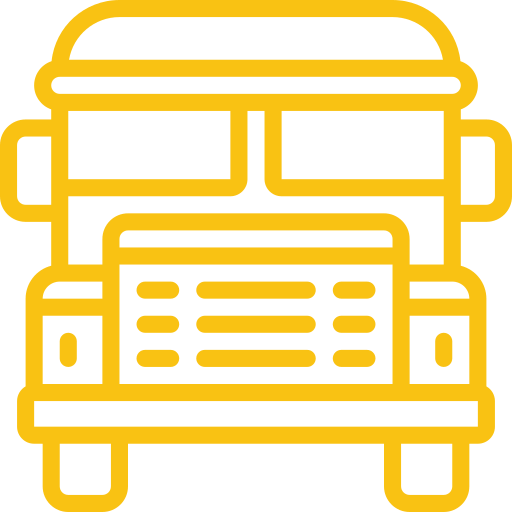Artificial Intelligence (AI) has kind of been a big deal lately. It’s hard to do anything without someone talking about the potential of AI, and the education system is no different.
Some teachers are scared, some are excited, some honestly have no idea what I’m talking about right now (not sure where you were the last year, but it’s time to wake up).
*Side note, one teacher recently sent me a message, “is this something I should know about? I didn’t realize this impacted K-12 education.” My response was “right now it’s probably just the way students are doing essays for you, but yeah, things are changing pretty fast out there and we need to get ahead of it…or at least catch up a little.”
AI has the potential to revolutionize the way education is delivered. Scratch that. AI will revolutionize the way education is delivered. What you’ve always done, the way you were taught in the past, that will all change in the coming years.
It’s not a matter of if, it’s when. And how much.
As of the current moment, teachers are often using it to take care of instructors’ routine tasks. Things like helping with lesson plans and activities.
Students are using it to help them write papers (or to do the whole thing), and to get help with ideas. But mostly to answer questions and do work for them. If you are giving a research paper, odds are decent at least a few of your students are using artificial intelligence tools to complete their work.
And in many cases the quality is pretty solid. If a kid is smart, they can even ask it to write like a typical person their age. Or they can rewrite portions in their own words.
Turns out, everyone focuses on the negatives when it comes to AI, or in any other such technology when it first shows up. I’m old enough to remember when the internet first started getting used, or when online learning became popular. It was the end of the world, no one would know how to do anything. Turns out the world still needs people.
AI won’t eliminate the education sector, it will simply change the way we do things in the classroom.
Like anything, there will be good and bad. Some of the good things:
- Learning that’s more personalized, efficient, and interactive.
- Virtual classrooms, possibly virtual reality
- Give real-time feedback to students
- Offer personalized learning pathways for each student
- Automate mundane tasks such as grading and providing feedback on assignments
- Provide educators more time to focus more on teaching and mentoring their students
- Just to name a few
The Benefits of AI in Education and What It Could Mean for the Future
At the end of the day, there may be no more significant change in the history of education than the impact of artificial intelligence. To expand on some of the ways student learning can/will be transformed, let’s take a look at how educational technology will shake things up.
Personalized, Efficient, and Interactive Learning
If you’ve ever seen the movie Ender’s Game, this is one of the ways we’ll see major changes in the future. Each student will have a personalized learning experience, one that is tailored to their learning style, preference, and needs. Students will be able to go on tangents and dive deeper on topics that interest them. Students’ satisfaction will improve, since they’ll have more control over their learning. The whole question of “why are we learning this” will be less frequent, since fewer lessons will be hand delivered fully formed to our students.
Voice recognition can be utilized, meaning that 2 students speaking different languages can work together more easily, increasing student performance for ESL and bilingual students in the classroom.
Classrooms using AI can also be more equitable, ensuring that students can build an environment that brings in more diversity than may otherwise be applied (since each lesson could be tailored to that individual student).
Virtual Classrooms
Undoubtedly, AI will have a huge impact on field trips. Funding is always an issue in the field of education, often resulting in inequity for field trips. A lot of time is spent on a field trip when it comes to transportation, something that can be easily eliminated when field trips are only an AI application away. Although we are in the early stages of traveling virtually, it’s not that far away.
In the distant future the role of AI could go so far as to have a virtual teacher working with students, also allowing a teacher to fill the role as an AI tutor. This would allow school districts across the country to provide the same level of education, again leveling the field for schools more than we have in education today.
Consider the financial and geographic implications alone, with schools that are more remote typically unable to pay their teachers as much. Although many great teachers work in smaller districts, it is natural that there is a constant drain of teachers leaving for higher paying jobs. AI can level the playing field, ensuring that students all have access to high quality education.
Real-time Feedback
Imagine an intelligent tutoring system, one that can realize quickly the mistakes that students are making and help correct them in real time. One of the biggest challenges teachers have is the fact that there’s only one of us in the room. We can’t be everywhere at once, which limits students’ performance.
With AI, students who need extra help can ask questions and get direct support that is tailored to their own learning style, they just need to know the correct inputs to get the correct outputs.
Repetitive questions will be limited, as directions will be available in multiple formats automatically for each student. “What are we supposed to be doing?” will be replaced with machine learning, which means that students can ask for images, written directions, videos, or any other format that human beings can think of.
Students will be able to work at their own pace, pushing to maximize their learning paths, allowing them to explore their individual needs and preferences. Memorization will be replaced with discovery, feeding into the minds of curious students, giving learning more practical implications. The greatest impact may be that those advanced students won’t need anyone to create new experiences for them, AI will be able to take student-specific learning patterns and create an infinite number of learning opportunities.
Better Use of Time
The use of AI in education could also lead to more efficient teaching methods, as well as improved student engagement. By utilizing AI-powered edtech software, teachers will be able to focus less on mundane tasks like grading papers or creating lesson plans, and more on engaging with their students in meaningful ways.
Administrative tasks like creating lesson plans and unit plans can be outlined by AI, then improved on by the teacher.
Emails to parents can be crafted quickly, and differentiated to different groups of students. Create a single message that is translated into multiple languages, or has different outputs based on the grades students currently have. Create responses to popular questions that you have (even though they are in the syllabus, just saying) to help you with quick responses. Set things up so that if various hypothetical scenarios happen, you have a response ready made that gets sent automatically.
Administrative work, like measuring academic performance over a long period of time, can be done automatically. Instead of wasting precious planning time, big data can be compiled into useful information that can be shared with administration, students, or parents. More time delivering effective support, less time compiling the numbers.
In fact, using AI-driven interventions can provide teachers with powerful tools to help them better understand their students and develop more effective teaching strategies. With AI-powered tools, educators can gain insights into student behavior and performance by identifying patterns in student data, such as test scores, attendance records, and other learning metrics. In other words, interventions can be aligned to the needs of each student, allowing the teacher to spend more time actually intervening. The goal is that these interventions can happen before the problems identified become too deeply ingrained.
What Challenges Does AI Present to Education?
This is not to say that there aren’t challenges posed by the use of artificial intelligence. AI will have a significant impact, but at times the road will be bumpy.
One of the biggest fears, based on a recent study we conducted at MTI on teacher’s feelings about AI, is that it could lead to job loss for educators. 7.1% of those who responded stated that they felt artificial intelligence will replace teachers, 22.2% weren’t sure, and 70.7% believed that teachers would be safe from our AI overlords. Overall a sense of optimism prevailed, but plenty of educators are still wary that the education industry could be without human faculty members in the future.
Another problem is that AI, in its current form, isn’t always accurate. Student outcomes can be completely useless if they are led down a path where they are learning the wrong information.
Full disclosure, this is also a possibility with real humans. Don’t go thinking we’re right 100% of the time either. The fact that AI struggles at times actually means that the learning environment needs humans to work with AI, meaning the potential solution could be to coexist rather than make it a zero sum game. Neither side, humans or these new educational technologies, needs to eliminate the other.
Humans are biased (although we struggle to overcome this), but AI can also be biased. Just one more hurdle to overcome as new technologies are introduced to the learning processes.
And since humans are biased, there is also the possibility students will choose to ignore populations they are biased against. Whereas a classroom teacher may choose a resource to encourage diversity, a student could choose to direct their AI learning platform to ignore content from certain populations.
Exploring the Possibilities of AI-Powered Learning Environments
One of the best uses of AI in the future will be using it to track student progress, customize instruction, and provide personalized feedback. Since I’ve already hit on the last 2, let’s dive into the first one a little deeper.
AI-powered assessments will help tackle one of the most time-consuming tasks they have, grading. There’s a deeper discussion that takes place during most teacher’s careers, the moment when they question what grades really mean. As a parent, I can tell you the frustration I felt with one of my own children getting a B in a class because the teacher wouldn’t round up from an 89.6%. *Side note, it’s really hard to win an argument like that with a math teacher.
Now imagine a theoretical framework designed by the teacher, with an infinite number of learning outcomes, delivering constant formative assessment, based on each individual student’s ability. Talk about meeting the needs of individual students!
Instructor interaction with students will be about raising a student’s level, rather than checking a box that they accomplished an arbitrary achievement that someone decided they should reach at a certain age.
Group work will be flexible, with students working in groups based on their interests, crossing the borders to different disciplines.
Teachers will use AI to keep them in the loop with new findings in their academic field. A teacher can have a new finding summarized, then ask the following questions and prompts to their AI tool of choice:
- Can you summarize this into a few paragraphs?
- How will this impact human life?
- Write me a lesson plan for a 50 minute class on this topic.
- Make it for my grade level and subject
- Include a hook, activity, and exit ticket
- Tell me how this relates to other topics
- Just to name a few ideas
From a quick idea to a lesson of the day in less than a minute. Yes, teachers will need to do their homework, but you have to admit there are some exciting possibilities here. It might mean doing something different than you’ve done for the last 20 years, but it doesn’t necessarily mean that much more work.
Also, consider the quiet kid in class who is so introverted that they refuse to speak up. You know they’re smart, so has every teacher they’ve ever had. But they are so afraid to say the wrong thing that they sit there quietly, avoiding eye contact, praying that you won’t call on them.
That student could find freedom in performing without human interaction (or a simulated human audience) as they practice, helping them gain confidence to perform and speak out in larger groups.
How Can We Prepare Students (and Teachers) for a Future With Artificial Intelligence?
In order to create learning experiences that will improve student performance, we’ll need to actually start diving in and engaging with artificial intelligence and other related technologies.
I understand that the use of computers still receives some backlash from some educators, but to prepare our students for the future we need to embrace online education, in all its forms. This doesn’t mean that all educational content will be computer based, students still need to understand facial expressions and tone of voice, they need to learn how to read other humans for interaction.
At the same time, we can’t pretend that our educational institutions, from the lowest grades to higher education, are exempt from the real world.
As memorization continues to become less important in the regular classroom, the real value is on the creative and deep thinking aspects of the educational process. In today’s world, answers are easy to find, but do you know how to ask the right questions? How can you tell what is a great answer, good answer, or a deep fake?
We need to teach students how to develop the skills necessary to best use AI, to get the most out of it. We need to discuss career options, including how current jobs will be impacted. Even what new careers will appear that don’t exist today.
Yes, technology kills jobs. But it also creates new ones. It’s always been that way. The car was going to take away jobs from all those people involved in the horse and carriage industry. I’m sure at one time our early ancestors complained that all these new farmers were killing hunter/gatherer jobs.
Jobs will be killed by AI. But new jobs will arise. Whether you like it or not, things will continue to progress.
That all being said, we need more professional development, for those that are afraid to tackle these educational tools on their own. There are still those out there who believe they can break the internet if they do something wrong on their computer, or that every website is trying to steal their information (the last one there may not be as much of a joke as I once thought).
Let’s face it, with the rise of AI and its increasing presence in our everyday lives, it is becoming increasingly important to equip students with the skills and knowledge necessary to succeed in a future with artificial intelligence.
AI literacy skills development, AI integrations into curriculum, and career options with artificial intelligence are all important elements that need to be considered when preparing students for a future with AI.
By understanding the capabilities of AI and how it can be used, students can better understand how they can use this technology to their advantage. Additionally, by incorporating AI into their education, they will be able to develop a more comprehensive understanding of its applications in the workplace and beyond. With these considerations taken into account, we can ensure that our students are well-prepared for whatever challenges may come in the future.
Conclusion: Taking Advantage Of The Opportunities
In recent years it’s been all over the news. AI is coming and it will destroy everything. Now…that could still happen. But full disclosure, you’ve been around artificial intelligence for a long time now. Auto-correct, facial recognition, Google/Apple Maps driving directions, online searches, chatbots, and social media, just to name a few things.
Machines have been deciding what you see, where you go, and who you connect with for a while now.
Every time something like this comes up, there are those that belittle it. I’m guilty, I resisted using Facebook for many years, to the detriment of my business. There are always going to be those who find innovative ways to use technology, and likewise there will be those who run away.
You can focus on the negatives, or you can look for the positive impact of AI systems. Personally, I believe my consumer economics class is designed to prepare my students for the real world, not the world the way I want it to be. Which means you need to dive in and learn more about AI, since it doesn’t appear to be going away anytime soon.
Next Steps
If you are interested in learning more about AI, check out our article on 14 Awesome AI Tools for Teachers, written by yours truly. You’ll find some tools to get you started, but keep in mind that the design of AI systems is moving at breakneck speed.
If you are looking for online courses, consider the graduate course that I wrote (and teach), MTI 580 AI in Education: Exploring the Applications of AI Technologies in the Classroom. It’s a great place to get started, and take a little of the pressure off, while earning 3 graduate credits.
